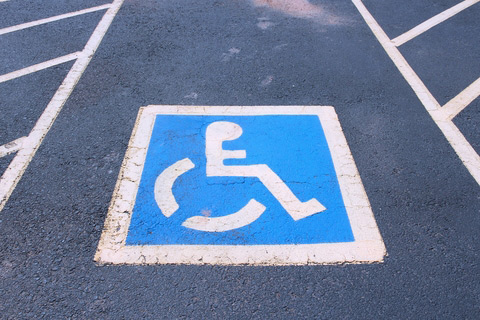Disability Information

The Foundation periodically receives information that is vital to a specific demographic or population segment, and in keeping with our mission of providing education relevant to our constituency, we take steps to make it available to visitors to our site.
We recently received a communication from Educator Labs, an organization comprised of school librarians and media/market research specialists who work as curators and conservators of the scholastic web. Among other things, Educator Labs’ mission is to strengthen connections among the educational web by acting as courier of emerging topics and collections of reference materials for use by educators nationwide.
In carrying out their mission, Educator Labs often compiles collections of material that has a high degree of relevance and importance to population segments outside of the education community. One such example involves a “Toolkit” they have developed to provide information of critical importance to Americans with disabilities. At the AMAC Foundation, we believe that a substantial segment of our constituency includes seniors with disabilities, and have agreed to provide this information to that portion of our readers via this post.
Why is this an important topic?
Consider this excerpt from a United States Census Bureau news release issued in conjunction with the ADA’s 22 anniversary…
About 56.7 million people — 19 percent of the population — had a disability in 2010, according to a broad definition of disability, with more than half of them reporting the disability was severe, according to a comprehensive report on this population released today by the U.S. Census Bureau.
The report shows that 41 percent of those age 21 to 64 with any disability were employed, compared with 79 percent of those with no disability. Along with the lower likelihood of having a job came the higher likelihood of experiencing persistent poverty; that is, continuous poverty over a 24-month period. Among people age 15 to 64 with severe disabilities, 10.8 percent experienced persistent poverty; the same was true for 4.9 percent of those with a non severe disability and 3.8 percent of those with no disability.
Other highlights:
- People in the oldest age group — 80 and older — were about eight times more likely to have a disability as those in the youngest group — younger than 15 (71 percent compared with 8 percent). The probability of having a severe disability is only one in 20 for those 15 to 24 while it is one in four for those 65 to 69.
- About 8.1 million people had difficulty seeing, including 2.0 million who were blind or unable to see.
- About 7.6 million people experienced difficulty hearing, including 1.1 million whose difficulty was severe. About 5.6 million used a hearing aid.
- Roughly 30.6 million had difficulty walking or climbing stairs, or used a wheelchair, cane, crutches or walker.
- About 19.9 million people had difficulty lifting and grasping. This includes, for instance, trouble lifting an object like a bag of groceries, or grasping a glass or a pencil.
- Difficulty with at least one activity of daily living was cited by 9.4 million non institutionalized adults. These activities included getting around inside the home, bathing, dressing and eating. Of these people, 5 million needed the assistance of others to perform such an activity.
- About 15.5 million adults had difficulties with one or more instrumental activities of daily living. These activities included doing housework, using the phone and preparing meals. Of these, nearly 12 million required assistance.
- Approximately 2.4 million had Alzheimer’s disease, senility or dementia.
- Being frequently depressed or anxious such that it interfered with ordinary activities was reported by 7.0 million adults.
- Adults age 21 to 64 with disabilities had median monthly earnings of $1,961 compared with $2,724 for those with no disability.
- Overall, the uninsured rates for adults 15 to 64 were not statistically different by disability status: 21.0 percent for people with severe disabilities, 21.3 percent for those with non severe disabilities and 21.9 percent for those with no disability.
According to a CDC report, people with disabilities are more likely than those without disabilities to report having poorer overall health, less access to adequate health care and more engagement in risky behaviors such as smoking and physical inactivity.
In the words of Educator Labs, “(t)his means that we need to work together to build supportive communities. Indeed, these facts drove our team to put together a toolkit to help empower our disabled population with their options and their rights!”
The Toolkit Contents
The AMAC Foundation is pleased to partner with Educator Labs by providing site visitors access to the components of their toolkit via the these links:
- Home Safety for People with Disabilities
- Disability Accommodation Cost Guide
- Home Modifications to Promote Independent Living
- Fire Safety & Disabilities Guide
- Disability.gov’s Guide to Transportation
- Rights for Those With Hearing Loss
- Increasing Physical Activity among Adults with Disabilities
- Chronic Pain Relief with Swimming Exercises
- Stay Active with a Disability: Quick Tips
- Personal Finance Guide for People with Disabilities
- Life Resources for the Deaf and Blind
- Career Assistance for the Blind and Vision Impaired